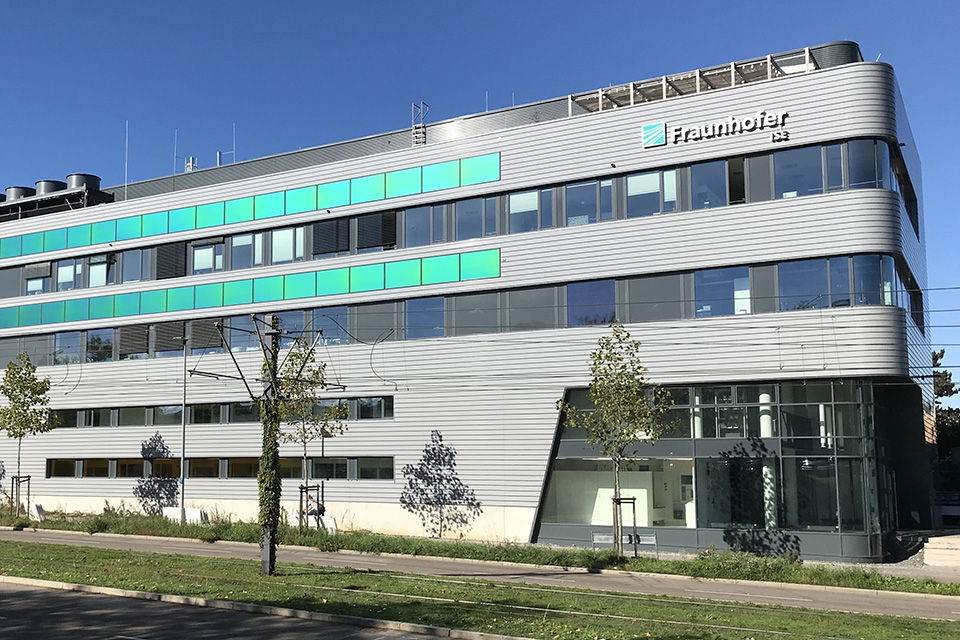
MorphoColor® consists of a photonic structure in which an interference layer is combined with a geometrically structured substrate in such a way that a narrow-band reflection yields maximum results.
© Fraunhofer ISE
Aesthetic and planning objections have historically slowed down the adoption of solar modules, but that is changing. Almost two years since the Fraunhofer Institute for Solar Energy Systems (ISE) unveiled its patented MorphoColor® solar technology – inspired by the colour absorption properties of the iridescent wings of the Morpho butterfly – the institute has integrated 60 of the modules into its façade. The building-integrated photovoltaics (BIPV) pilot will supply the research institute with around 11 MW hours of solar electricity per year.
MorphoColor® allows for the tinting of the module’s glass while maintaining at least 90 percent solar absorption efficiency. From an architectural and urban planning perspective this is exciting: it means the panels can be seamlessly integrated into a roof, or even set accents in the façade. For example, brick red-tinted panels would disappear into the building envelope.
“The potential of building-integrated PV is huge; for roofs and façades together we calculate a technical potential of 1,000 GW/peak in Germany. That is twice the nominal power that is needed for the energy transition,” says Dr Harry Wirth, division manager Photovoltaic Modules and Power Plants at ISE in a press release.
Technically, MorphoColor® consists of a photonic structure in which an interference layer is combined with a geometrically structured substrate in such a way that a narrow-band reflection yields maximum results. The layer reflects a particular colour and allows the rest of the sunlight to pass through virtually unhindered. The coloured coating therefore only reduces efficiency by 10 percent compared to an uncoated module.


